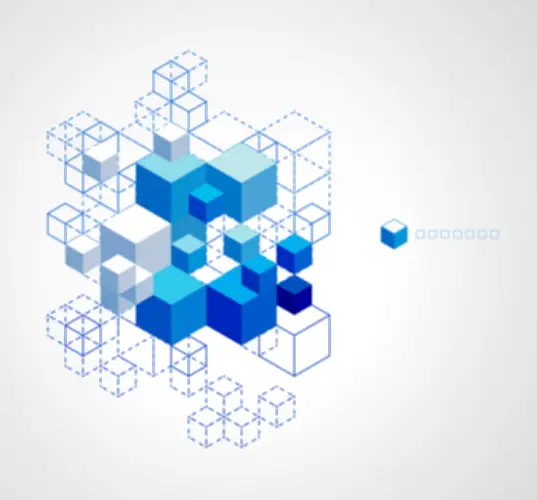Rancher Prime presents a robust solution for simplifying the administration and deployment of container orchestration in any situation, making it easier for organizations to reap the benefits of containerization. Containers are lightweight and require fewer sources to run than digital machines. It is easier to accommodate a number of containers on a number, regardless of the setting. When deployed at scale with a container orchestration software, containers yield significant price financial savings. The container orchestration system additionally requires much less time and human capital to handle than handbook deployments, saving even more. While smaller container implementations might use a mix AI For Small Business of customized tools or use shell scripts to handle the containers, manual intervention needed is high.
What’s The Difference Between Kubernetes And Docker?
And their user-friendly and advanced automation is predicted to enhance, particularly now with the growing demand for scalable AI apps. Container orchestration addresses these challenges by automating and streamlining the deployment and administration container orchestration technologies of containers. It supplies a centralized and scalable solution to efficiently coordinate containerized workloads, giving software program developers and their DevOps counterparts a sooner and extra agile approach to automating much of their work. Dynatrace provides AI-powered observability into Kubernetes and Docker Swarm.

The Significance Of Container Orchestration

Like the others here, Nomad is an open-source workload orchestration device for deploying and managing containers and non-containerized apps throughout clouds and on-premises environments at scale. Docker Swarm can also be a totally built-in and open-source container orchestration device for packaging and operating purposes as containers, deploying them, and even finding container images from other hosts. The Atlas Kubernetes Operator provides to this by offering the means to manage Atlas in a method that is changing into increasingly frequent for other infrastructure — as IaC (infrastructure as code), by way of declarative configuration recordsdata. With IaC, the infrastructure provisioning and administration could be automated, saving time that’s otherwise consumed in manually scaling, restarting, and spinning the infrastructure from time to time. The admin or developer only configures the desired state and never how to reach it. This additionally simplifies and accelerates the CI/CD pipeline and promotes the DevOps tradition via continuous integration, testing, and deployment of code changes.
Docker Container Orchestration Vs Kubernetes Container Orchestration
A container, usually referred to as an application container, is a portable unit of software program that sometimes provides a microservice and operates in an surroundings with different containers. It might use resources from a bunch, but it usually operates independent of the host operating system and can be utilized on any platform. If a failure occurs someplace in that complexity, popular orchestration instruments restart containers or substitute them to extend your system’s resilience. Modern orchestration instruments use declarative programming to ease container deployments and management.
In the past, managing these totally different applications and environments would require much guide effort and coordination. With container orchestration, the corporate can use a single platform to handle all of its containers and environments, permitting it to easily deploy, handle, and scale its applications across different environments. This permits the corporate to adopt new technologies more easily and streamline its growth course of. Kubernetes (K8s or Kube) is an open-source container orchestration software for containerized workloads and companies.
Alternatively, they might choose to deploy their workloads on a managed solution and, in so doing, find yourself with high working expenses or vendor lock-in. In recent years, Kubernetes has grown to become the dominant of the orchestration methods. Kubernetes was created by Google in 2014 but obtained actually in style in the previous couple of years.

Containers enable builders to create, deploy, and run purposes persistently across various environments. However, as containerized applications develop in scale and complexity, effectively deploying, managing, and terminating containers can turn into a challenging task. Tools to handle, scale, and maintain containerized applications are calledorchestrators. Docker Desktop offers improvement environments for both of theseorchestrators. Container orchestration is the process of managing the lifecycle of containers inside a distributed surroundings. Containers are light-weight, portable, and scalable models for packaging and deploying applications, providing a consistent surroundings, and reducing the complexity of managing dependencies.
Container orchestration is the technique of using automation to handle the lifecycle of app containers. This approach automates time-consuming tasks like (re)creating, scaling, and upgrading containers, liberating teams from repetitive guide work. Container orchestration effectively tackles the complexities of dealing with large-scale containerized apps. The platforms mentioned above all offer good options for container administration.
- It’s a less complicated method to entry the software you already depend on, construct in a unified Kubernetes-based environment, and deploy anyplace.
- And I am studying about of the Container orchestration time period, which defines the connection between containers when we’ve distinct “software items” separate from one another, and the way these containers interact as a system.
- It’s an entire platform for running trendy purposes and lots of advanced groups have begun looking at Kubernetes as a platform for building platforms.
- With container orchestration, the company can use a single platform to handle all of its containers and environments, allowing it to simply deploy, manage, and scale its purposes throughout different environments.
Like Kubernetes, Docker Swarm additionally has several employee nodes and supervisor node which handles the worker nodes’ sources and ensures that the cluster operates effectively. Container orchestration has been at the heart of this evolution because it maximizes the benefits of microservices and drastically streamlines day-to-day operations. Managing containers effectively will proceed to be a priority going forward, so count on orchestration to solely turn into extra prevalent on the earth of containerized apps.
While VMs virtualize hardware for strong isolation, containers isolate on the course of stage. By solving the longstanding problems with surroundings consistency and useful resource effectivity, containers have turn out to be an essential tool in trendy utility growth. Container orchestration simplifies the administration of complex, multi-container purposes by handling load balancing, service discovery, scaling, and failure restoration. This automation is important for maintaining a reliable and scalable application infrastructure.
Unlike Swarm or Kubernetes, however, Mesos solely supplies management of the cluster, so a quantity of frameworks have been built on high of Mesos, together with Marathon, a “production-grade” container orchestration platform. The orchestration device schedules deployments, locating suitable hosts based mostly on constraints in the configuration file, such as CPU or memory availability. Containers may also be positioned based on labels, metadata, or proximity to different hosts. Once operating, the orchestration tool manages the container lifecycle per the container’s definition file (e.g., Dockerfile).
A node represents a single machine, the smallest computing hardware unit that pod cases run on. When several nodes pull assets together, they make up a cluster, the master machine. Since pods are a replication unit within the orchestration platform, they scale up and down as a unit, that means all of the containers within them scale accordingly, regardless of their particular person needs. Container orchestration permits engineers to manage when and the way containers begin and stop, schedule and coordinate part activities, monitor their well being, distribute updates, and carry out failovers and restoration procedures.
VMs enable engineers to run numerous functions with ideal OSs on a single physical server to extend processing power, cut back hardware prices, and reduce operational footprint. Containers can run multiple elements or microservices however are usually unbiased in their operation. Here’s a fast summary of the differences between containers and microservices.
Transform Your Business With AI Software Development Solutions https://www.globalcloudteam.com/ — be successful, be the first!